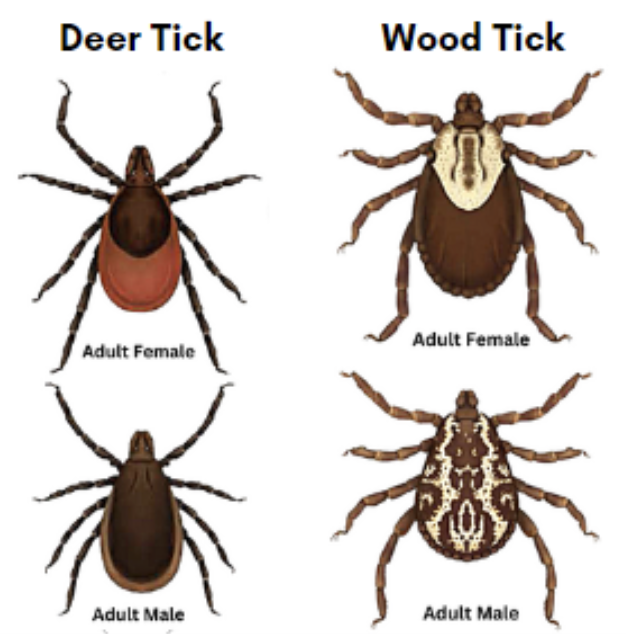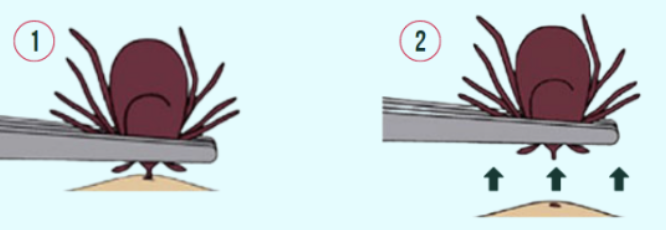 As a mom, my summer calendar is already filling up! With the school year over, my kids have tons of outdoor activities planned for the summer— nature walks, camping trips, hikes at Devil’s Lake, summer camps, and helping mom garden. While these activities are often a blast, it’s important to remember that ticks are common in Wisconsin and can cause disease. In fact, due to the early warm weather we had this year, we have seen more ticks out earlier in the spring than usual.
As a mom, my summer calendar is already filling up! With the school year over, my kids have tons of outdoor activities planned for the summer— nature walks, camping trips, hikes at Devil’s Lake, summer camps, and helping mom garden. While these activities are often a blast, it’s important to remember that ticks are common in Wisconsin and can cause disease. In fact, due to the early warm weather we had this year, we have seen more ticks out earlier in the spring than usual.
Reported cases of Lyme disease have been on the rise in Wisconsin. In 2022, there were 5,311 cases of Lyme disease reported in Wisconsin. Unfortunately, the tick that spreads Lyme disease thrives in Wisconsin, and warmer winters due to climate change allow ticks to remain active for most of the year.
While the tick that spreads Lyme disease is most common in the northern part of the state, it is also found in wooded parks and backyards in southern Wisconsin. Spending time with our kids outdoors is one of the best parts about Wisconsin summers. Follow these strategies and learn more about the ticks that spread illnesses to #FightTheBite and help keep our kids and family healthy so the summer fun never ends!
The blacklegged (deer) tick spreads most diseases in Wisconsin
 In Wisconsin, there are two types of ticks that often bite people: the blacklegged tick (commonly known as the deer tick) and the American dog tick (commonly known as the wood tick). Deer ticks are responsible for causing nearly all illnesses spread by ticks in Wisconsin. Deer ticks not only spread Lyme disease, but can also cause other diseases such as anaplasmosis and babesiosis. Wood ticks on the other hand, are not known to spread disease in Wisconsin except in very rare instances.
In Wisconsin, there are two types of ticks that often bite people: the blacklegged tick (commonly known as the deer tick) and the American dog tick (commonly known as the wood tick). Deer ticks are responsible for causing nearly all illnesses spread by ticks in Wisconsin. Deer ticks not only spread Lyme disease, but can also cause other diseases such as anaplasmosis and babesiosis. Wood ticks on the other hand, are not known to spread disease in Wisconsin except in very rare instances.
It is important to protect our kids and ourselves from tick bites on every family adventure. People of all ages can catch diseases spread by ticks, but children 5–14 years old are more likely to get Lyme disease compared to most other age groups. This is, in part, because kids in this age group are so active and more likely to venture into wooded or brushy areas—perfect tick habitat.
Tips to fight the bite
- Use an EPA-registered repellent, such as one with DEET, Picaridin, IR3535, or Oil of Lemon Eucalyptus, and apply according to label instructions.
- Treat clothing and gear with permethrin and allow it to dry before heading outdoors. Permethrin-treated clothing and gear will kill ticks after contact. Do not use permethrin directly on your skin.
- Wear long-sleeved shirts and pants to keep ticks away from your skin. Wearing light-colored clothes can help you more easily spot a tick on you.
- Check for ticks after you spend time in or near wooded areas. Safely remove any ticks from yourself, family, and pets as quickly as possible. Showering within two hours after coming indoors can wash off loose ticks and is also a great opportunity to do a full-body tick check.
- Remove the tick as soon as possible if you find one. Removing a tick within the first 24 hours reduces your chance of getting Lyme disease. Remove a tick with fine-tipped tweezers and pull upwards. Clean the bite site and your hands with rubbing alcohol or soap and water.
 Oh no! I got bitten by a tick bite. Now what?
Oh no! I got bitten by a tick bite. Now what?
If you or your kids get bitten by a tick this summer, there’s no need to panic. Not all tick bites will make you sick. Simply remove the tick as soon as possible. If you’d like our experts to identify the tick, take a picture of the tick or save it in a sealed bag or container. You can get rid of the tick by wrapping it tightly in tape and then tossing in the garbage or by flushing it down the toilet. Monitor for symptoms like fever, rash, or new muscle and joint pain for at least 30 days after the bite. If any of these symptoms occur, contact your doctor right away.
Written by: Rebecca Osborn, Vectorborne Disease Epidemiologist.









